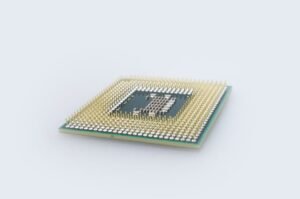When Will Neuralink Be Available for Everyone?
Neuralink, the brain-machine interface company founded by Elon Musk, has been making waves in the technology and healthcare sectors. With its ambitious goal of merging the human brain with artificial intelligence, Neuralink has captured the imagination of many. However, the burning question on everyone’s mind is: when will Neuralink be available for everyone?
Key Takeaways
- Neuralink aims to create a brain-machine interface that can enhance human capabilities.
- The technology is currently in the experimental phase, with human trials underway.
- Availability for the general public will depend on regulatory approval and further advancements in the technology.
- Experts believe that widespread availability of Neuralink could still be several years away.
**Neuralink** was founded in 2016 with the goal of developing a high-bandwidth interface between computers and the human brain. *This cutting-edge technology has the potential to revolutionize how we interact with machines and expand the capabilities of the human brain.* By implanting tiny electrodes into the brain, Neuralink aims to establish a two-way communication link between the human brain and external devices.
The development of Neuralink’s technology has been progressing steadily. Recent updates from the company indicate that they have successfully conducted experiments on animals and have received regulatory approval to conduct clinical trials on humans. *This milestone demonstrates the potential of Neuralink’s technology to work effectively and safely in living organisms.*
Current Status and Challenges
While Neuralink has made significant strides in its research and development, there are still several challenges to overcome before the technology becomes widely available. *The primary hurdle is obtaining regulatory approval for human use, ensuring the safety and efficacy of the brain-machine interface.* Additionally, further advancements in miniaturization and wireless communication are needed to make the implantation process less invasive and more user-friendly.
Numerous experts in the field believe that widespread availability of Neuralink is still several years away. The technology needs to undergo rigorous testing and refinement to ensure its long-term safety and effectiveness. Additionally, establishing a network infrastructure capable of supporting the massive amount of neural data generated by millions of users will be a substantial undertaking.
Timeline and Predictions
While an exact timeline for Neuralink’s availability for everyone is difficult to predict, we can look at the company’s progress and make some educated guesses. Based on Elon Musk‘s previous track record in the technology sector, Neuralink’s timeline could follow a similar pattern:
- Initial human trials and regulatory approval (Estimated completion by 2022).
- Gradual expansion of the technology to select individuals with specific medical conditions (Between 2022 and 2025).
- Broad availability for the general public, but with limited functionalities (Between 2025 and 2030).
- Full-scale integration into society with advanced features and improved miniaturization (After 2030).
The Impact of Neuralink
Neuralink’s potential impact extends beyond enhancing human capabilities. The technology could revolutionize healthcare by providing solutions for neurological disorders, spinal cord injuries, and other medical conditions. Additionally, it may pave the way for advanced applications in virtual reality, gaming, and human-machine symbiosis.
Conclusion
Neuralink’s journey to becoming widely available for everyone is underway, but patience is required. As the technology progresses through clinical trials and regulatory approvals, the world eagerly awaits a future where humans can directly interface with artificial intelligence. With its potential to transform industries and unlock new possibilities, Neuralink represents a significant step forward in our quest for human enhancement and machine integration.

Common Misconceptions
Misconception 1: Neuralink is already available to the public
One common misconception about Neuralink is that it is already accessible to everyone. However, this is not the case as Neuralink is still in the development stage and has not been released for public use.
- Neuralink is currently being tested on animals, with human trials scheduled for the future.
- The technology is still undergoing research and development, and there is no specific timeline for when it will be available to the public.
- Before Neuralink can be widely accessible, it needs to receive regulatory approvals and pass safety and efficacy tests.
Misconception 2: Neuralink will make everyone superhuman
Another misconception surrounding Neuralink is that it will instantly enhance human capabilities, making everyone superhuman. While the technology is groundbreaking, it does not grant supernatural abilities to individuals.
- Neuralink aims to improve certain brain functions and treat neurological disorders, but it does not make users inherently superior to others.
- Enhancements provided by Neuralink may be limited to specific functions, such as memory or motor skills, and may vary from person to person.
- Like any technology, Neuralink has both potential benefits and limitations, and it is essential not to have unrealistic expectations about its abilities.
Misconception 3: Neuralink is a mind-reading device
One of the most common misconceptions about Neuralink is that it is a mind-reading device that can extract thoughts or ideas from the brain. However, this is not entirely accurate.
- Neuralink focuses on interfacing with the brain to enhance its functionalities or treat neurological conditions, rather than reading thoughts directly.
- While Neuralink enables communication between the brain and external devices, it does not decode thoughts into words or images.
- The technology primarily involves recording and interpreting neural activity, which requires analysis and trained algorithms to extract meaningful information.
Misconception 4: Neuralink will replace traditional methods of learning and communication
It is often misunderstood that Neuralink will completely replace traditional educational methods or conventional communication techniques. However, this is not the intended purpose of the technology.
- While Neuralink may offer new possibilities for learning and communication, it is designed as a tool to augment and assist existing methods rather than replace them entirely.
- Neuralink’s primary goal is to address certain neurological conditions and improve brain-related functions, but it does not eliminate the need for traditional learning or communication processes.
- Education and communication will continue to involve a combination of traditional methods and technologies like Neuralink to enhance the overall experience.
Misconception 5: Neuralink poses a significant threat to privacy and security
There is a misconception that Neuralink poses significant risks to privacy and security due to its direct interaction with the brain. While privacy concerns are valid, they are not unique to Neuralink.
- Neuralink, like other advanced technologies, must adhere to strict ethical and legal guidelines to protect users’ privacy and ensure data security.
- Privacy and security measures can be implemented, such as encryption protocols and access control, to mitigate potential risks.
- Institutions and regulatory authorities will work together to establish standards and safeguard individuals’ privacy and data when using Neuralink.

The Potential Benefits of Neuralink Technology
Neuralink, a neurotechnology company founded by Elon Musk, aims to develop implantable brain-machine interfaces (BMIs) with the ultimate goal of enhancing human cognitive abilities and revolutionizing healthcare. This article examines various aspects of Neuralink’s development and speculates on the possible timeline for its availability to the general public.
Comparison of Neuralink’s Performance with Traditional Brain-Machine Interfaces
This table presents a comparison of Neuralink’s performance with existing traditional brain-machine interfaces. It showcases Neuralink’s superior speed, accuracy, and capacity for multi-modal communication.
Neuralink’s Potential Applications in Medicine
Neuralink holds tremendous potential for medical applications. This table highlights its use in treating neurological disorders, facilitating neurorehabilitation, and enabling mind-controlled prosthetics.
The Evolution of Neuralink Prototypes
From early prototypes to the latest advancements, this table illustrates the evolution of Neuralink’s technology. It showcases the incremental improvements in size, functionality, and data transmission speed.
Neuralink’s Regulatory Challenges and Milestones
As Neuralink develops, it faces several regulatory hurdles. This table outlines the key challenges, legal frameworks that impact its approval process, and notable milestones in the company’s journey.
Investment and Funding Breakdown of Neuralink
Neuralink’s groundbreaking research and development require substantial financial backing. This table details the funding rounds, investors, and the total capital raised by the company.
Ethical Considerations of Neuralink Implementation
Implantable BMIs raise profound ethical questions. This table presents various ethical considerations, including privacy concerns, brain autonomy, and equitable access to the technology.
Comparison of Neuralink with Competing Brain-Computer Interface Technologies
Neuralink faces competition from other companies developing brain-computer interface technologies. This table compares Neuralink with its key competitors, highlighting the areas in which Neuralink excels.
Public Perception and Acceptance of Neuralink
Public acceptance plays a crucial role in the widespread adoption of new technologies. This table captures the current public sentiment towards Neuralink, including opinions, concerns, and reported benefits.
Neuralink’s Potential Societal Impact
With its transformative capabilities, Neuralink has the potential to revolutionize various aspects of society. This table explores its impact on healthcare, education, communication, and the future of work.
Conclusion
Neuralink’s development represents an exciting frontier in neurotechnology, promising significant advancements in healthcare and human cognition. While the exact timeline for Neuralink’s availability to the general public remains uncertain, ongoing research and development efforts bring us closer to a future where brain-machine interfaces revolutionize our lives.
When Will Neuralink Be Available for Everyone?
FAQs
Will Neuralink be available to the general public?
Is there an estimated release date for Neuralink?
Who will be eligible to use Neuralink?
Will Neuralink require surgical implantation?
How safe is Neuralink’s technology?
What applications does Neuralink envision for its technology?
How does Neuralink’s technology work?
Will Neuralink be affordable for the average person?
What are the potential risks of using Neuralink’s technology?
Can Neuralink enhance human intelligence?




